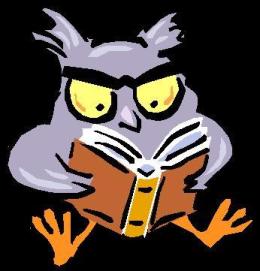
However, enough of that: How do I help my child? What do I actually do with a piece of bibliotherapy given that I have no training in that area? Follow the nine steps below and you will be giving your child a head start on self-management of their troublesome issue.
1. Identify your child’s needs. This may be through your own observation of your child’s behaviors in certain social situations, through a comment made by the schoolteacher, or by your child telling you they are scared of monsters under the bed for example.
2. Match the child’s need with appropriate materials. Find junior fiction of non-fiction that deals with slaying the monsters under the bed, divorce, a death in the family, or whatever needs have been identified. While selecting, keep the following in mind:
2 a. The book must be at your child’s reading ability level.
2 b. The text must be at an interest level appropriate to the maturity of the youngster.
2 c. The theme of the reading should match the identified needs of the youngster.
2 d. The characters should be believable so that the youngster can empathize with their predicaments. Children have their own preference for character presentation and illustration. Comic, animal, or mythical characters can be very believable to children. If this is how your child prefers their characters presented then stay with that.
2 e. The plot of the story should be realistic and involve creativity in problem solving. There is a plethora of well-written junior fiction that incorporates problem solving in all types of social situations so don’t always go straight to the self-help shelves.
3. Decide on the setting and time for the bibliotherapy reading. Will you read it, will you leave the book for your child to find, will you suggest the book to your child as a great read and hope they buy it with their pocket money?
4. Design follow-up activities for the reading based on your child’s interest, ability and your own financial position. Will you be available for discussion after story is read? Will you engage with your child in drawing a picture from the story, will you help your child journal their thoughts on the book, will you actively encourage some dramatic play or drama around the particular issue, or will you take a visit to a hospice and donate art materials, for children who are dying, to use?
5. Motivate your child to become involved with the book reading follow up activity by asking questions to get a discussion going on the topic even before the book has been read.
6. Pre engage in the follow up activities by asking leading questions or have short discussions throughout the reading. At the end of a chapter or every few pages, summarize what has happened so that “the message” does not get lost in the story line padding.
7. Immediately after you’ve read the story, take a short break to allow your child to reflect on the material.
8. Introduce the follow-up activities:
• Brief retelling of the story,
• In depth discussion of the book (e.g., discussing right and wrong, morals, the law, strong and weak points of the main character, etc.),
• Art activities (e.g., drawing map illustrating story events, creating collage from magazine photos and headlines to illustrate events in the story, draw pictures of events),
• Creative writing for the older child (e.g., resolving the story in a different way, analyzing decisions of characters),
• Drama (e.g., role playing, reconstructing story with puppets made during art activity, enacting a trial for the characters),
• Plan a visit to a place somehow connected to the story. Talk together about how stories often reflect what happens in real life and how story characters can help us to make real life better/easier/different.
9. Assist your child in achieving closure by answering any questions they may have. Because young children are literal and concrete thinkers consider listing possible-solutions, placing them where the child can see them and help your child work toward the solutions.
Related Families.com article that I recommend: The Art of Story Telling by Heather Long in Fun.
Have you written a children’s book that could be used as bibliotherapy? Please list it here so that other members can contact you if they need to. Have you used a book to help your child resolve an issue? Help other parents by telling us the title, author and what you used it for.

